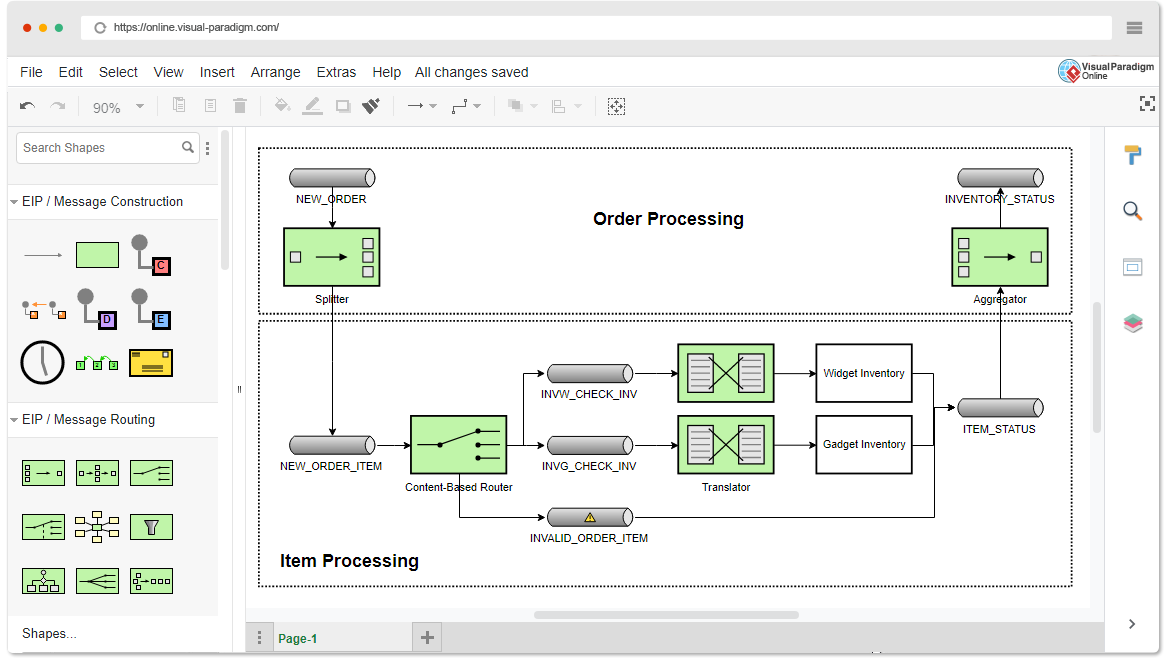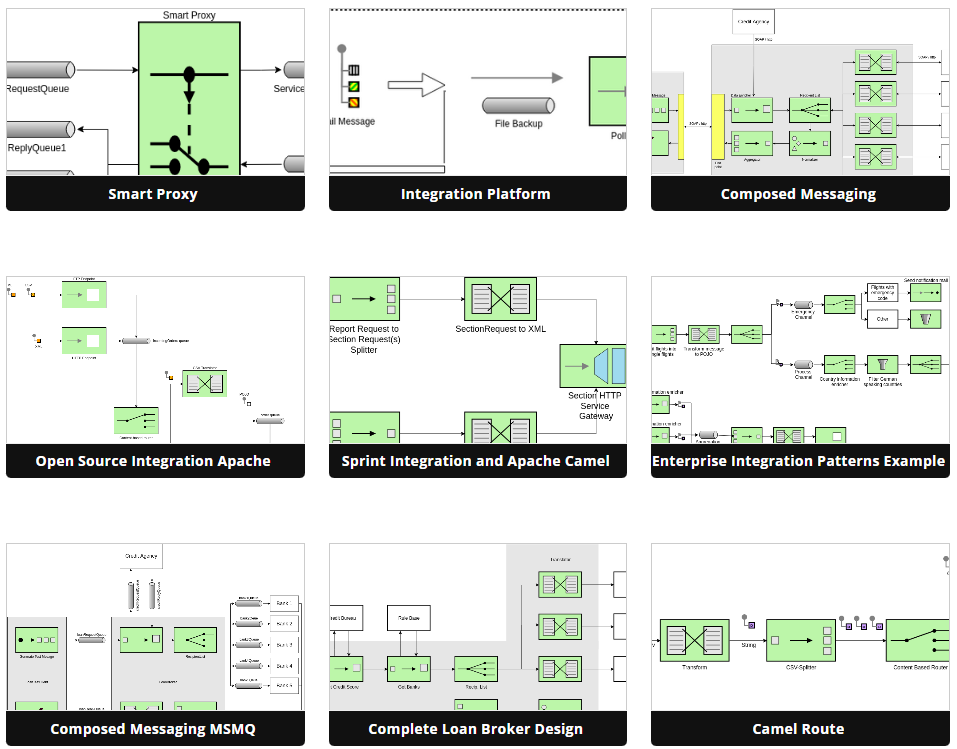Beginner’s Guide to Enterprise Integration Patterns (EIP) Diagrams
Introduction
Enterprise Integration Patterns (EIP) provide a set of guidelines and best practices for integrating different software systems and applications within an enterprise. These patterns help organizations create efficient, reliable, and maintainable integration solutions. To help you understand and apply EIP effectively, this beginner’s guide will introduce you to EIP diagrams and how you can learn by using a large collection of templates available in Visual Paradigm Online.
Understanding Enterprise Integration Patterns (EIP)
EIP was introduced in the book written by Gregor Hohpe and Bobby Woolf, which outlines 65 patterns for enterprise application integration and message-oriented middleware. The primary goal of EIP is to establish a common language and a set of workflow actions for integrating applications seamlessly, avoiding the need to reinvent the wheel for each integration challenge.

Benefits of EIP Diagrams
EIP diagrams serve as a visual representation of integration solutions, making it easier for teams to communicate and implement integration strategies. These diagrams can be created using various tools, with Visual Paradigm Online being an excellent choice due to its extensive collection of templates and user-friendly interface.
Learning by Examples with Visual Paradigm Online
Visual Paradigm Online is a cloud-based diagramming tool that provides a wide range of templates, including those specific to EIP. Here’s how you can start learning EIP by using this platform:
Step 1: Sign Up or Log In
If you don’t already have a Visual Paradigm Online account, sign up for one or log in if you do.
Step 2: Access EIP Templates
Visual Paradigm Online offers a vast library of templates, including EIP diagrams. To access these templates, follow these steps:
- Click on “New” to create a new diagram.
- In the “Template Gallery,” search for “Enterprise Integration Patterns” or simply “EIP.

Step 3: Choose a Template
Browse through the available EIP templates and select one that matches your integration scenario. You’ll find templates for various EIP patterns, integration types, and top-level alternatives, such as File Transfer, Shared Database, Remote Procedure Invocation, and Messaging.
Step 4: Customize and Learn
Once you’ve selected a template, you can start customizing it to fit your specific integration requirements. Visual Paradigm Online provides an intuitive interface that allows you to add components, connections, and annotations to your diagram.
Step 5: Explore Patterns
Each EIP pattern in Visual Paradigm Online comes with documentation and explanations. Take the time to read and understand the patterns you’re working with. This will help you grasp the concepts and principles behind each pattern.
Step 6: Experiment and Iterate
Don’t hesitate to experiment with different patterns and integration types using Visual Paradigm Online. The platform allows you to iterate on your diagrams and refine your integration solutions as you learn more about EIP.
Key Integration Types in EIP
EIP distinguishes several integration types, each suited for specific scenarios:
- Information Portal: This integration type focuses on sharing information between applications through a central portal.
- Data Replication: It involves replicating data from one system to another to ensure data consistency and availability.
- Shared Business Function: This type aims to share common business functions across different applications.
- Service-Oriented Architecture (SOA): SOA promotes the use of services to enable communication and integration between applications.
- Distributed Business Process: It deals with integrating and orchestrating business processes that span multiple systems.
- Business-to-Business Integration: This involves integrating with external partners and clients, often using standardized protocols.
- Tightly Coupled Interaction vs. Loosely Coupled Interaction: EIP considers the degree of coupling between integrated systems, ranging from tightly coupled (close integration) to loosely coupled (more independent systems).
Conclusion
Enterprise Integration Patterns offer a structured and proven approach to solving integration challenges within your organization. Visual Paradigm Online provides a valuable platform for learning EIP through practical examples and templates, making it easier for you to design effective messaging solutions and mature business processes. Start exploring EIP diagrams in Visual Paradigm Online today to enhance your integration skills and streamline your enterprise’s communication and workflow.

